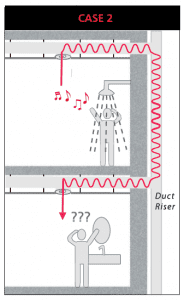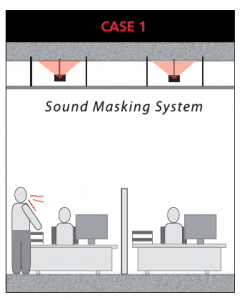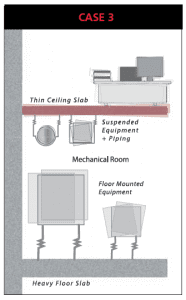Mitigating HVAC Related Noise and Vibration Problems in Building Design

However, there are several more unusual cases in which the design of the HVAC system may have other less obvious impacts on the design of the building.
The four cases presented in full in the pdf below (which can also be download by clicking here) outline several scenarios in which special acoustical considerations may be warranted during the design of a building HVAC system.
Case #1: Sound Masking Technology for Quiet or Silent Distribution Systems
Case #3: Equipment Vibration Isolation for Lightweight Ceiling Structures

Case #2: Acoustically Lined Ductwork for Common General Exhaust Systems
Case #4: Partitions or Isolation Joints for Curtain Wall Buildings
These considerations often arise from initiatives presented by the multi-disciplinary design team, to achieve Green Building (LEED™) goals related to energy efficiency, sustainability, or reduced subsystem costs, or to achieve a desired modern design aesthetic. However the design implications related to acoustics (and the costs to address the resulting issues) are not often well understood. Fortunately, it is more and more common to include an acoustical engineer on the multi-disciplinary team, to seek out and address these issues during design, and help develop the most appropriate and cost-effective solutions.
HVAC-Noise-and-VibrationThis article originally appeared in the December 2013 issue of Canadian Consulting Engineer Magazine



